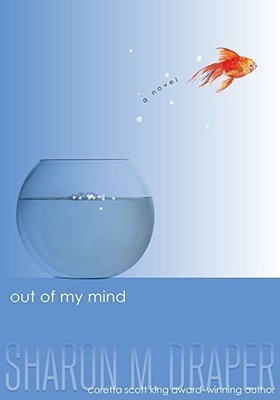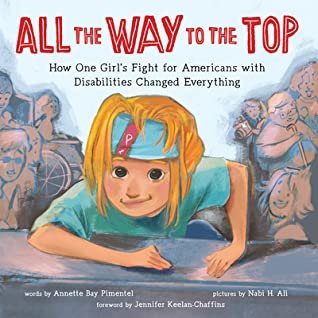Disability Pride Month
July is Disability Pride Month in recognition of the fact that the Americans with Disabilities Act was passed on July 26th, 1990. I missed the opportunity to write about Disability Pride Month last month, but saw this event: Centering Disabilities in the Classroom and felt inspired so figured a week late isn’t too bad. Also, with classroom set up and back to school looming, I know I appreciate reminders about setting up my classroom in the most accessible way possible and thinking about all the different voices and perspectives I want to showcase.
I share some resources and ideas below, but really, this event on Wednesday, August 16th from Lee & Low Books with Patty Cisneros Prevo (author of Tenacious: Fifteen Adventures Alongside Disabled Athletes as pictured above) looks fabulous and valuable on many fronts.
As Emily Ladau says, “language is one of the most important signals that we have to demonstrate our acceptance or rejection of a person’s identity.” This quote is a great place to start with students as you work to examine your language, how your class wants to choose their words wisely and thoughtfully, and language practices in your classroom/school/community.
This exhibit Disability Rights from the National Museum of American History is also a wonderful resource and would work for artifact or analysis work.
I’ve used All the Way to the Top: How One Girl’s Fight for Americans with Disabilities Changed Everything by Annette Bay Pimentel with students, but with caveats. This Book Review from Social Justice Books does a great job summarizing my concerns. I feel like so many children’s books minimize movements and decades (or more) of work to one person or one action when this is not how organizing and change making works. It feels like we are setting kids up to believe that there will be a dramatic moment that will change everything instead of recognizing the reality of activism and incremental change.
Here are two disability rights timelines to help with background about the disability rights movement:
DISABILITY RIGHTS HISTORY TIMELINE
When working with timelines and students, I really recommend putting the time into perspective by thinking about when you were born or when students family members’ might have been born (this happened when your grandparents were kids, etc), of course being sensitive to the fact that not everyone’s grown ups are the same age.
This New York Times article pairs the moments featured with photographs, which is always a plus: ‘Nothing About Us Without Us’: 16 Moments in the Fight for Disability Rights
As I shared in our Disability Awareness Month post from last year, always remember that representation matters. I remember when, “We invited a brilliant storyteller to our school to introduce our storytelling unit: Anne Thomas. She happened to use a wheelchair and it featured in her story. She also talked to the students about how strangers sometimes perceived her and then treated her as voiceless and only saw her wheelchair. Our students made connections to the stories she shared for months afterward. Children understand what it is like to be denied a voice or only seen a certain way. Anne visited us as an expert storyteller, not as someone with a disability to “teach” us about what it is like and we intentionally framed her visit this way. She shared an anecdote about how at restaurants, wait staff often ask someone else what she would like to eat or ignore her. It’s as if the wheelchair is all people see about her, to the point that they do not register when she is speaking. One aspect of her visit that was challenging was that our school is not wheelchair accessible. We talked to students openly about this and had to make alternate arrangements. They were frustrated we could not host Anne in our own classroom as it was on the second floor and felt that the lack of accessibility was unwelcoming.”
Two other resources I share in that post that are always worth re-sharing are the Disability in Kidlit blog and this amazing database of young adult and middle grade books featuring disability representation. You can find it here: http://yadisabilitydatabase.com. Huge thanks to Struck by Stories ☕ for compiling it!
I also wrote a post for Deaf History Month with some resources and lots of book recommendations.
Happy (belated) Disability Pride Month!
















